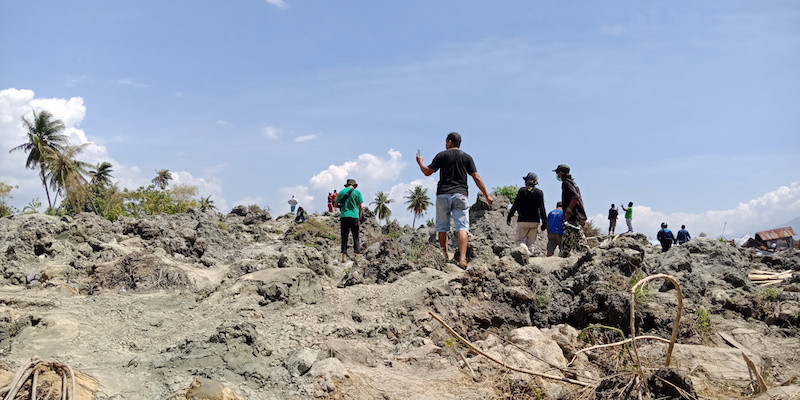Popular Reads
Top Results
Can't find what you're looking for?
View all search resultsPopular Reads
Top Results
Can't find what you're looking for?
View all search resultsC. Sulawesi administration to build memorial parks on quake sites
The areas affected by earthquake-triggered soil liquefaction will be reforested and turned into green public spaces.
Change text size
Gift Premium Articles
to Anyone
T
he Central Sulawesi provincial administration plans to build memorial parks in areas affected by earthquake-triggered soil liquefaction in Palu and Sigi regency to remember the victims.
The geological phenomenon hit Palu and Sigi following a 7.4-magnitude earthquake and subsequent tsunami that devastated Central Sulawesi in September 2018.
Soil liquefaction is a natural process that occurs when the ground loses its firmness as heavy soil and rock sink, while light soil and sand rise to the surface, often as a result of powerful tremors, particularly in coastal areas. Witnesses said the "mud" rolled like ocean waves, moving houses in Petobo subdistrict in South Palu as much as 700 meters from their original locations.
A 2012 study by the National Geology Agency found that several areas in Palu were very prone to soil liquefaction.
Survivors who owned houses in the affected areas are not allowed to return and build new houses in the area.
“Those are red zones. People are banned from building houses there,” Central Sulawesi administration secretary Mohammad Hidayat Lamakarate told The Jakarta Post on Monday.
Based on the new master plan drawn up after the disaster, areas affected by soil liquefaction, including Petobo and Balaroa in Palu and Jono Oge in Sigi, will be reforested and turned into green public spaces in which the memorial parks will be built.
The administration had also set up new sites to build new houses for former residents of the affected areas, Hidayat said.
In Palu, the administration will develop new residential areas in different subdistricts including an 80 hectare plot in Duyu subdistrict and another 82 ha plot in Tondo subdistrict. Meanwhile, the a 210 ha plot in Pombewe subdistrict in Sigi regency is set to be transformed into a new city, while other sites in different subdistricts in the regency are currently being studied.
Central Sulawesi councilor Matindas Janus Rumambi of the Indonesian Democratic Party of Struggle (PDI-P) advised the government to be strict with its decision regarding the zoning, while encouraging the public to obey the administration’s instruction to not build any buildings in the disaster-prone red zones.
“We don’t want more victims because of indecisiveness and disobedience,” he said.
Matindas added that the economy was also recovering, as people were back in traditional and modern markets, while other centers of economic activity such as bus transportation hubs and offices had resumed operations.
According to the Post’s observation, some 40,000 survivors of the earthquake, tsunami and liquefaction in Palu are still staying in temporary shelters in different parts of Palu.
Liquefaction victims in Balaroa said they refused to move to temporary residential buildings, also known as huntara, and instead called on the authorities to just build permanent houses for them.
One of the survivors, Agus Manggona, argued that the authorities would save money by directly building permanent houses rather than building temporary houses before building the permanent structures.
“Just imagine, they build huntara for us then we have to wait for two years to get a permanent house. It’s a very long time,” he said.
The Public Works and Housing Ministry reported in January that the ministry had only completed 217 of 699 temporary housing units. Each unit comprises 12 12 square meter rooms. (swa)










